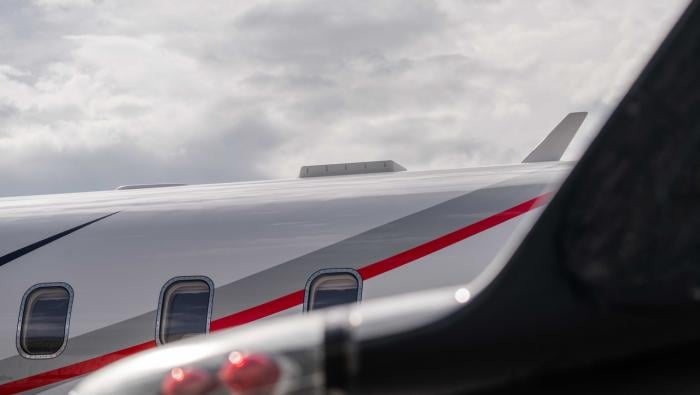Although the use of in-cabin wireless networking has grown rapidly since the 1999 release of the IEEE 802.11b Wireless Fidelity (WiFi) standard, wireless networking in the hangar to support maintenance functions has been slow to catch on, mainly for cultural and regulatory reasons. However, emerging technologies that increase technician productivity and FAA acceptance of electronic maintenance systems may begin driving maintenance, repair and overhaul (MRO) suppliers toward paperless environments within the next few years.
“We’re in a paper-intensive business,” said Matt Tobin, vice president of Canadian software vendor Mxi Technologies, during the Aviation Maintenance Software Technology and Resource Symposium held in Phoenix late last year. “There are a lot of inefficiencies, wasted time and data accuracy problems as a consequence of the extensive use of paper in aviation. A paperless environment offers huge potential for gains in productivity and data accuracy.”
Mxi, which provides aviation maintenance software and wireless solutions for defense, airline and corporate aviation clients, recently released Version 5 of its Maintenix software. Currently in use by NetJets subsidiary Executive Jet Management (EJM), Dassault Aviation and Bombardier Aerospace, Maintenix provides program management, planning and scheduling, work execution, configuration training, maintenance history tracking and discrepancy management functions for medium to large fleets. According to data released by Mxi, EJM reported a productivity increase of 63 percent within two years of installing Maintenix, even while the EJM fleet itself doubled.
While using maintenance support software can provide productivity gains, Tobin says that additional efficiencies can be obtained by allowing mechanics and inspectors to enter data directly into the software using wireless devices such as handhelds or laptops. Working with Bombardier’s Defense Services division to support a 40-aircraft operation and maintenance contract for the Canadian military, Mxi recently developed a vehicle-mounted wireless system that allows technicians to complete aircraft inspections, work orders, signoffs and other maintenance “paperwork” planeside without re-entering data into the software at a later date.
“The advantage of a vehicle-mounted wireless device [versus handheld] is that you don’t have to worry about battery life because you can piggy-back on the vehicle’s electrical system,” said Tobin. The vehicle-mounted solution uses a full-size keyboard, eliminating handwriting recognition and stylus-typing problems associated with handheld devices.
The Mxi solution also uses a Java-based encrypted smart card that provides a digital signature in compliance with FAA Advisory Circular 120-78, Acceptance of Electronic Signatures, Electronic Record Keeping Systems and Electronic Manuals. Maintenance personnel using the smart card can electronically sign off on inspections and work tasks by swiping the card through a reader that is connected wirelessly to the Maintenix system. Mxi has already assisted one customer in obtaining approval of its Maintenix-based system, with no paper-based backup system required, from a defense agency regulator, and is in the early stages of working with a commercial customer for FAA approval of a similar system.
“A key issue with our regulators is the need to have strict procedures around identifying who did the [maintenance] and whether they were authorized to do the work at the time,” said Tobin. “The FAA doesn’t approve technology itself, but the approval is based on technology as married to a set of business processes. So there will be only case-by-case acceptance of these technologies and processes.”
Impediments to Wireless Technology for Maintenance
Since the latest version of the WiFi standard, released in June 2003, increased the bandwidth-compliant devices from 11 Mbps to 54 Mbps, a new crop of high-bandwidth wireless devices has appeared on the market. Though the increased bandwidth makes some maintenance technologies more viable, such as those used for filling out inspection forms and work orders, other uses of wireless technology must wait for further advances.
“In terms of wireless technology, it’s all about bandwidth,” said Ray Andrick, president of Perceptive Solutions, whose Handheld Non-Routine Card maintenance tracking system was piloted at Goodrich ATS in 2001 and is currently in use by three of the five largest MRO providers in the U.S. “There are applications that exist today in the lab environment that aren’t practical on smaller handhelds. Handhelds don’t have the horsepower, and the wireless networks don’t have the bandwidth.”
One example Andrick cited was the use of real-time instructional video to assist maintenance technicians in specific work tasks. “That type of instructional video exists today, but its large [file size] is difficult to beam across a wireless network in a meaningful time frame. There are also applications where a head-up display can overlay diagrams of different parts of the aircraft, but again only in a lab environment.”
According to Andrick, wearable technologies are becoming more viable in terms of daily-use robustness, but industrial handhelds will continue to be more viable in terms of cost. While industrial handheld devices cost approximately $1,200, tablet PCs cost at least double and head-up devices more than 10 times that amount.
Even if the technology is viable, the aviation industry’s conservative culture may prevent its maintenance arm from going completely paperless anytime soon. “Paperless is a noble ambition,” Andrick said, “but probably not a realistic one. I run a technology company and I can’t get folks to stop printing paper.”







